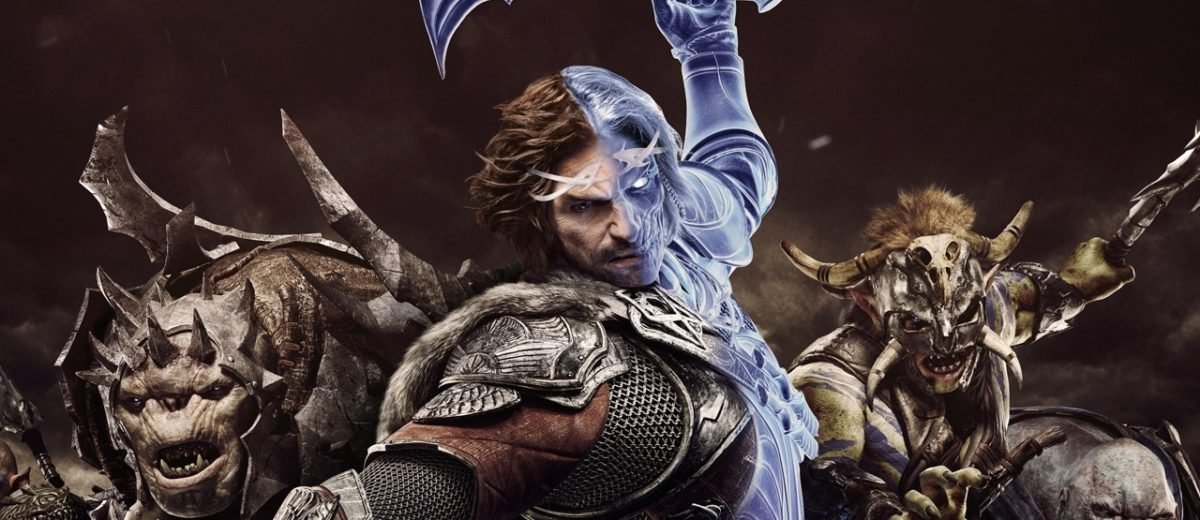Many of us are still reeling from the announcement of Shadow of War, a sequel to Middle-Earth: trenhadow of Mordor. While Shadow of Mordor was well received, it is by no means perfect. The game got a lot right, but it also got some things wrong. We hope that Middle-Earth: Shadow of War can improve on the first game and make a great experience even better.
What Shadow of Mordor Does Right
When Middle-Earth: Shadow of Mordor was announced, developer Monolith Productions proudly showed off its patented Nemesis System, an element sure to make the jump to Shadow of War. Monolith originally promised that, with this feature, enemy Orcs would be randomized, could become stronger if they complete special missions or kill the main character Talion, and will remember every victory or defeat. Almost more surprising than what the Nemesis System promised is that it delivers on these promises. No two players have the same experience in the game. For example, one gamer might run into Tûgog the Poet and is outmatched by the large Orc’s poisoned axes and immunity to stealth, while another gamer instead might find Otha Ironjaw and dispatch him with a single headshot.
Middle-Earth: Shadow or Mordor’s combat is another standout mechanic. The game manages to combine the stealth and free-running of Assassin’s Creed with the combo/counter system of the Batman Arkham franchise. Since Talion is hopelessly outnumbered by Orcs, even when he can hypnotize them, he needs to be able to sneak along rooftops one second, drive his dagger into the skulls of fifty Orcs the next, and then run away at a moment’s notice as if he were being pursued by Sauron himself. Even though Talion is a strong fighter, he is not invincible and can easily be overwhelmed (and killed) by sheer force of numbers, or just sheer force, if he isn’t careful. It helps the player feel both powerful and vulnerable at the same time.
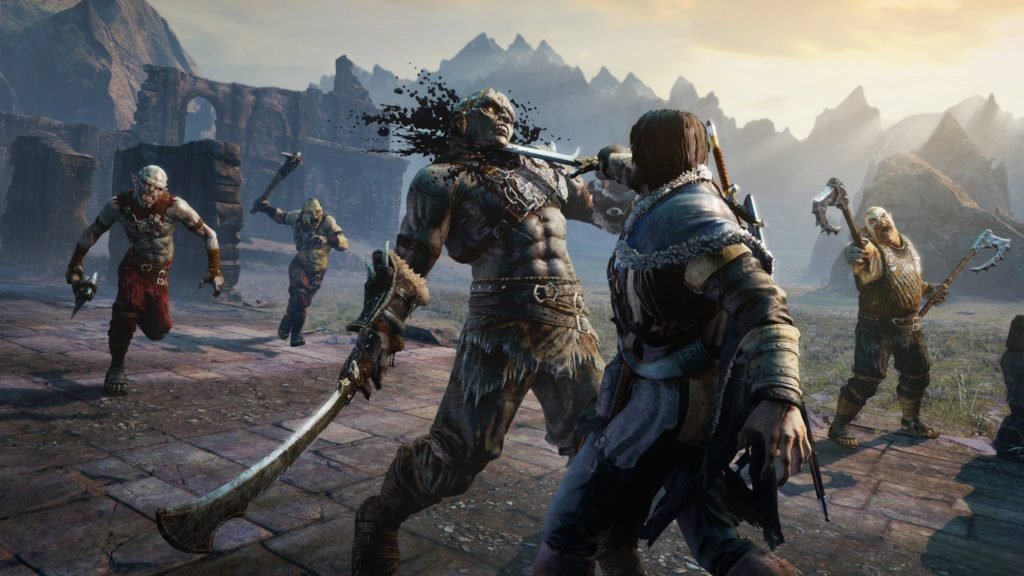
While collectibles might be a clichéd mechanic in many games, they help make Middle-Earth: Shadow of Mordor feel more alive. As an open-world game, players can explore slimy caves swarming with Ghûls, massive stronghold towers housing Orc snipers, and everything in-between. To help build out the world though, Monolith Productions hid various collectibles in these locations.
Collectibles primarily come in the form of artifacts, which hold echoes of past events — from various ancient tools that tell of a time before Sauron ruled over Mordor to the morbidly humorous journal entries of a man slowly driven mad by the constant buzzing of flies. A major strength of the Lord of the Ring series and all its related movies and books is that the world is portrayed as alive; each location has its own history, and audiences are given glimpses into what used to be. The artifacts players find in the game help Mordor seem more alive and real, like it is a place that isn’t just “home of the Orcs” and nothing more.
What Shadow of Mordor Does Wrong
While the Nemesis System is Shadow of Mordor’s best feature, it is also the game’s biggest handicap. While no two Orcs are entirely identical, their strengths and weaknesses are randomly selected from a predetermined pool. This leaves many Orcs feeling samey, as you’ll fight an Orc who hates fire the exact same way as all the other Orcs who hate fire, regardless of other strengths and weaknesses. Furthermore, due to the random nature of their strengths and weaknesses, some Orcs are far too powerful, others can be taken down far too easily, and some have weaknesses that negate their strengths.
Case in point, during my playthrough, I ran into two different Orcs, one named Ûshbaka the Beggar and one whose name I never learned. Ûshbaka was an absolute pain to take down since he was an archer who fired savage bolts in quick enough succession to kill me in seconds. He also was immune to stealth and ranged attacks, which meant I could only fight him by charging headlong, as if I were Leeroy Jenkins. My artificially limited tactics gave him plenty of opportunity to turn me into a medieval pincushion. As for the other Orc, he apparently ran away from an explosion before I ever properly encountered him. He then met his untimely end halfway across the map in the jaws of a Caragor. And then you have Lûgnak Pot-Licker, an Orc (featured in another gamer’s playthrough) who has the ever-useful “Monster Slayer” skill that lets him kill any wild Mordor monster he finds despite being afraid of literally every wild Mordor monster.
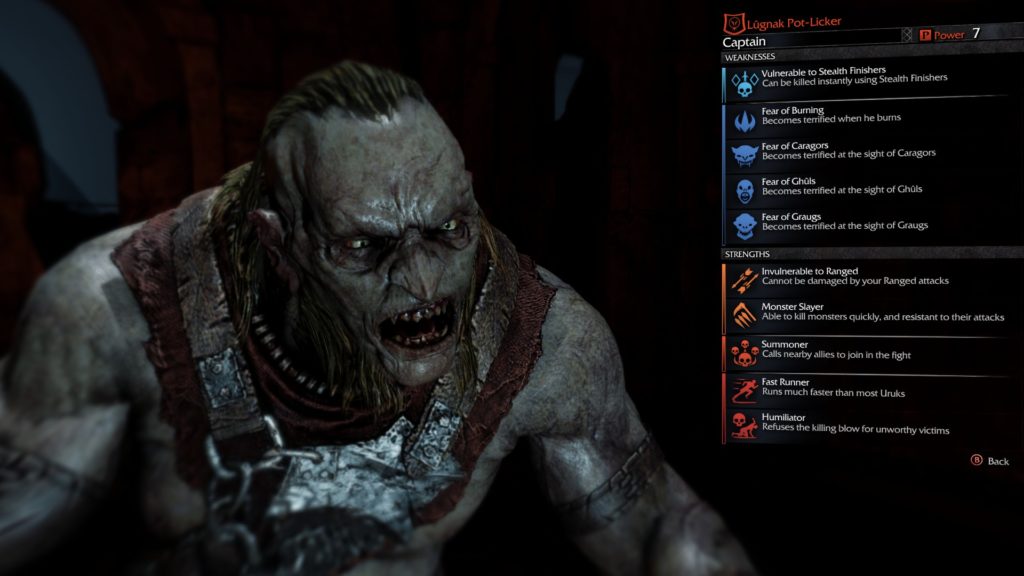
Most of the combat in the game is fast, flashy, and furious, but the final boss takes all of what the game previously established and throws it out the window. Thematically, the missions that lead up to the boss are well done, as they task the player with gathering an army to face a battalion of Orcs handpicked by the final boss. One would expect the boss battle to force the player to use all the skills he or she mastered in the game, but instead it is a measly quick time event — not an epic duel between two master swordsmen, not some grand melee where two men fight while opposing Orc forces clash in the background, but an anticlimactic quick time event. Not much else has to be said about the sheer disappointment this “boss fight” brings.
Other than that, one of the worst offenses of Middle-Earth: Shadow of Mordor is the game’s lackluster story and unmemorable characters. The Lord of the Rings franchise is the epitome of “it’s the journey, not the destination.” The story may start with several Hobbits on a quest to destroy the One Ring in the fires of Mount Doom, but the plot takes breaks to explore various locations and events. From the Mines of Moria to the Battle of Helm’s Deep, Lord of the Rings is rife with memorable locales, battles, and characters that could easily be the stars of their own independent stories. In some respects, Lord of the Rings is the blueprint for modern day open-world games, especially the ones that provide players side-quests to go along with the main one.
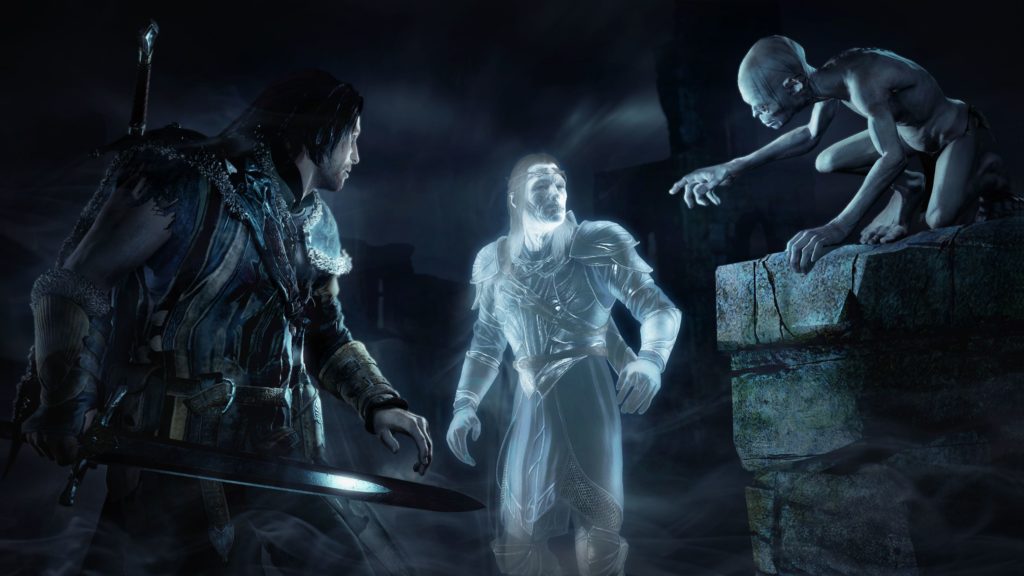
Sadly, Middle-Earth: Shadow of Mordor does not take advantage of the groundwork laid out by its source material. The side-quests are generic “brand five Orcs in under two minutes” and “rescue three humans without being detected” missions that repeat over and over again. Worst of all, the story and characters are completely forgettable. All Talion ever does is try to find the men who murdered him and his family. By comparison, even though Frodo Baggins always sought to destroy the One Ring, he was occasionally side-tracked by the odd jaunt through Goblin-infested mines or his attempts to rehabilitate Gollum. All Talion ever does is kill Orcs, whether it be to get the attention of his murderers or just for the sake of killing Orcs. The story and all of its Orc killing lack any depth or substance, and the characters are just one-note cardboard cutouts who do nothing but help Talion kill Orcs more effectively.
How Shadow of War Can Improve
Middle-Earth: Shadow of Mordor lives and dies by its Nemesis System. While the system is extremely impressive and well realized, it has numerous flaws. Monolith Productions can improve the Nemesis System with bosses who have unique strengths that mix up the gameplay. For example, one story-oriented Orc warchief could have the ability to grab nearby Orcs and use them as living projectiles, or another Orc could somehow negate Talion’s ability to brand and control Orcs. Furthermore, Shadow of War could add new enemy types (e.g., the Trolls, Balrog, and Ringwraiths featured in the trailer) that fight differently from one another and have their own unique pools of strengths and weaknesses. Even if these enemies do not utilize unique mechanics, their fights could still be enjoyable so long as they are not the QTE snorefest that is Shadow of Mordor’s final boss.
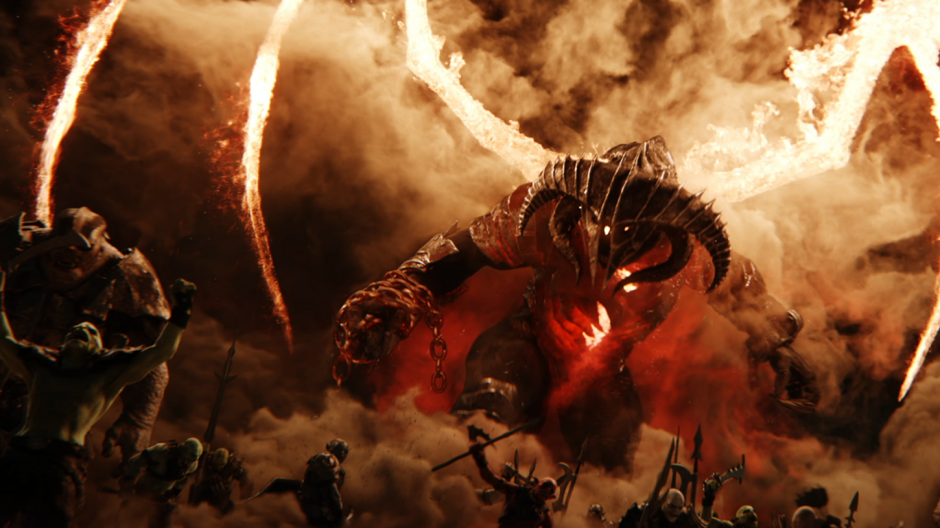
To fix the narrative problems, Monolith Productions could give Middle-Earth: Shadow of War a deeper story and introduce new mission types. The trailer teases that Talion’s wraith partner Celebrimbor will be kidnapped. This could make for a compelling story, especially if the game were to provide players with various moral choices related to finding Celebrimbor. For example, the game could introduce a mission where Talion learns that a nearby Orc encampment holds a clue where Celebrimbor is being held and why, and he also learns that it will soon be empty because the Orcs are about to attack a human settlement. Does Talion leave the humans to their fate and sneak into the Orc encampment to easily retrieve the clue, or does he defend the humans and sneak into the camp later when it is swarming with Orcs who are expecting him? Missions and story developments such as these would be a vast improvement on the boring, clichéd story and repetitive missions of Shadow of Mordor.
Middle-Earth: Shadow of Mordor is an excellent, if flawed, game. If Monolith Productions fixes Shadow of Mordor’s flaws, Middle-Earth: Shadow of War could quite possibly be a perfect game, or at least very close to perfect. Only time will tell if Monolith has learned from its past mistakes.


